Should you replace white rice with konjac rice if you're trying to lose weight?
South Korean actress Song Hye-kyo purportedly ate nothing but konjac rice for two months to prepare for her role in The Glory.
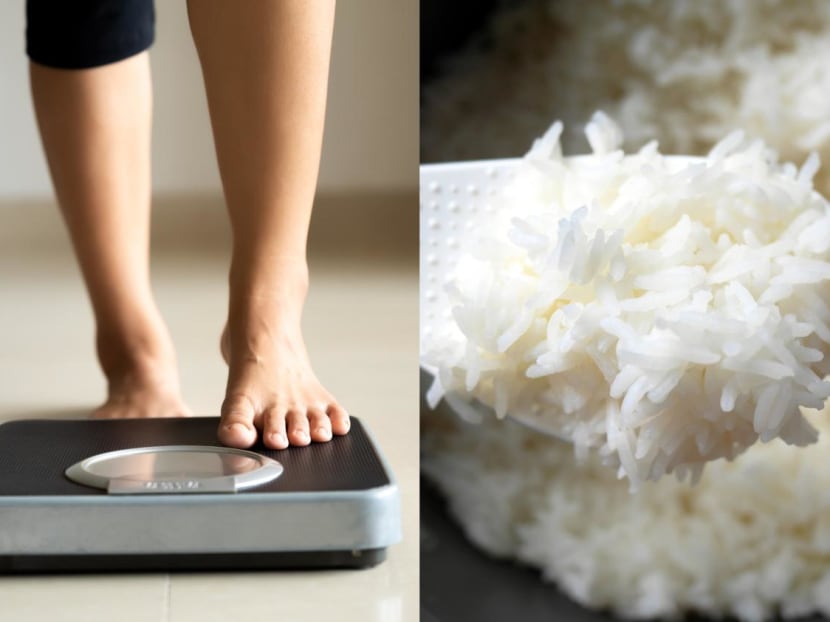
(Photos: iStock/spukkato and by Ch0Fu)
What do followers of the ketogenic diet and South Korean actress Song Hye-kyo have in common? Weight loss, as you might already have surmised. And the food of choice this time? Konjac, a chewy, slightly translucent ingredient that many have raved about for its supposedly low-calorie and low-carb content.
The 42-year-old Song reportedly ate nothing but konjac rice for two months to prep for her role in The Glory. Yes, that scene where she stood in just her underwear to show the extent of the horrendous scars covering her character’s body. And from the looks of those revealing shots, konjac seems to have done it for her.
Even if you’re not a K-drama fan, you might have seen konjac rice or noodles on online platforms offering keto meal plans, or spotted the uncooked versions in your neighbourhood supermarket.
So, what exactly is konjac? Is it the same as konnyaku? And can you lose weight like a K-drama actress if you substitute your rice and noodles with it?
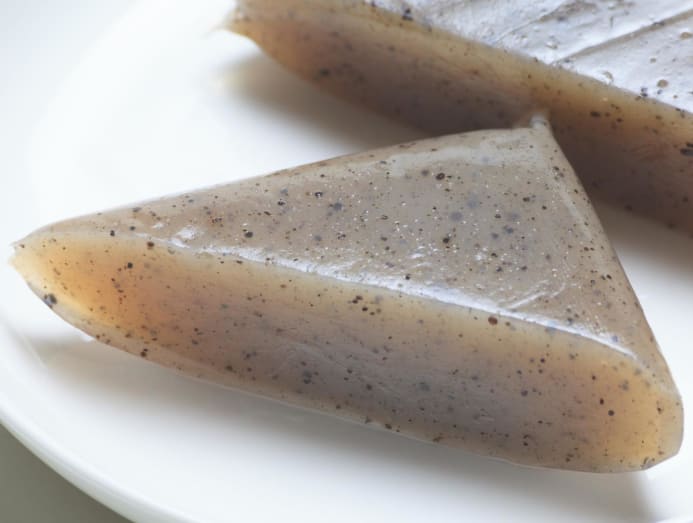
WHAT MAKES KONJAC LOW IN CALORIES AND CARBS?
Konjac is derived from the tuber of the konjac plant, much like a sweet potato or yam. The tuber is ground to create a flour, which is then mixed with water and limewater, and passed through the appropriate press to make “rice” or “noodles”.
Unlike the flours derived from other root vegetables such as potato starch, konjac flour does have minimal carbohydrates and calories. For comparison, 100g of konjac flour has about 10 calories, while the same amount of potato starch has nearly 360 calories.
If you pit 100g of white rice against the same amount of konjac rice, it is again a big disparity: White rice has 130 calories and 28g of carbs versus konjac rice’s 10 calories and 5g of carbs.
What makes konjac flour such a nutritional lightweight is predominantly its soluble fibre, glucomannan (80 per cent), said Diane Seto, a senior dietitian with Mount Elizabeth Hospital. The rest consists of small quantities of protein, fat and trace minerals like iron, zinc, manganese, chromium and copper. “Because konjac flour is mostly fibre, it is touted as being low in calories.”
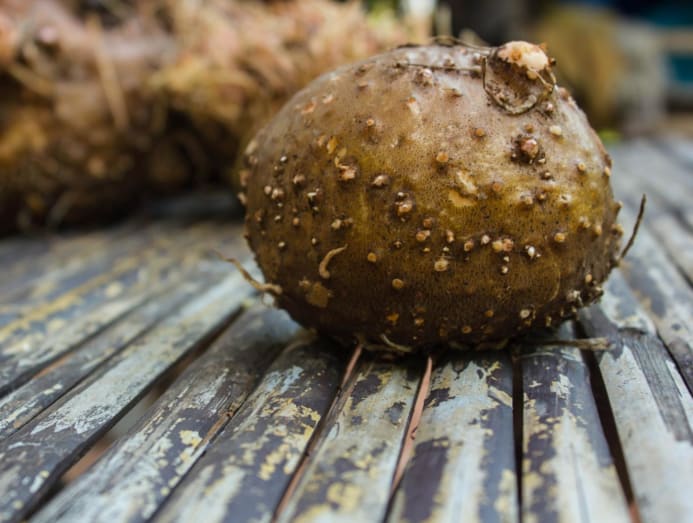
But do note that some shirataki may have vegetables and/or tofu added, said Jaclyn Reutens, a clinical and sports dietitian as well as the founder of Aptima Nutrition & Sports Consultants.
Another example is konnyaku, which is also made from konjac flour but is mixed with seaweed powder, sugar and water to make jelly, said Reutens.
The addition of these ingredients may slightly vary the caloric and carb counts of the resulting konjac products but they generally have 9 to 10 calories, and 2.4g of soluble fibre per 100g, she said. For context, the recommended daily fibre intake is 20g for women and 26g for men.
ALL THAT FIBRE HAS TO BE GOOD FOR HEALTH, RIGHT?
Sure, soluble fibre is essential for good bowel movement, improving blood sugar levels by promoting fullness, lowering blood cholesterol levels… all the good stuff. But glucomannan is hardly a magic bullet; it is not a cure-all, Reutens cautioned.
“While it's good to have lower blood sugar levels, there is a risk that overeating konjac can cause blood sugar levels to go too low, resulting in hypoglycaemia,” she said, especially for Type 2 diabetics patients.
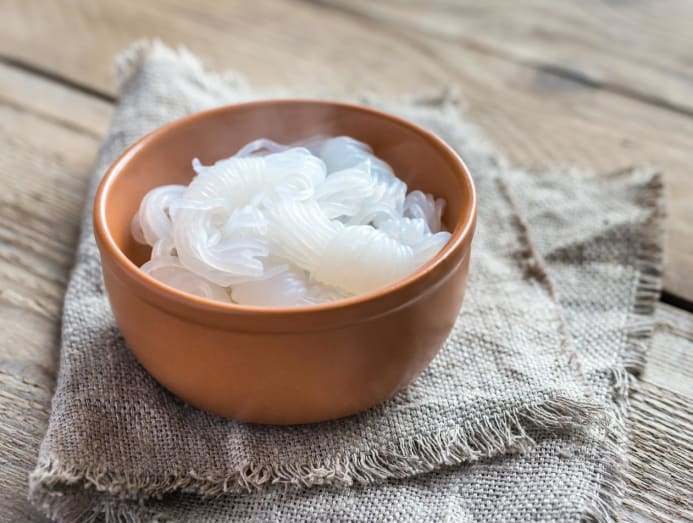
She also cited a 2008 systemic review that showed consuming glucomannan daily for three weeks did lower LDL-cholesterol – but highlighted that a change in diet and exercise are still necessary for long-term results.
As for easing constipation, yes, glucomannan does appear to increase bowel activity by 30 per cent, said Reutens. But “bear in mind that an increased fibre intake needs to be accompanied with fluid intake” for the fibre to form a gel and promote defaecation.
And sometimes, too much of a good thing is bad. “As konjac is high in fibre, it can reduce the absorption of calcium and iron,” said Seto. “It is best not to eat konjac rice at every meal. Otherwise, eat high-iron and high-calcium foods at a different time or meal in which you have konjac rice.”
You’ll know you have overdone the konjac if you suffer from bloat, diarrhoea, abdominal pain and nausea, said Reutens. “In very rare circumstances, you could choke to death if the supplements expand in the oesophagus and cause a blockage. Hence, konjac or glucomannan supplements are generally discouraged.”
Added Seto: “Konjac has a firm structure that doesn’t break down in your mouth like gelatin products”. For this reason, konjac sweets have been known to cause choking deaths in the elderly and children, she said.

WHAT ABOUT WEIGHT LOSS?
If you’re referring to The Glory actress, she would have lost weight due to the “sheer caloric restriction” because “konjac rice has little nutritional value besides dietary fibre”, said Reutens.
Certainly, such a diet is not advised as “she would be suffering from a lack of energy, protein deficiency, fat deficiency and a host of mineral deficiencies such as calcium, zinc and iron”. “She would have felt lethargic and suffered hair loss,” said Reutens.
“While two months is not a short period of time, it is also not long enough for the harm to be irreversible. This is not a safe and sustainable way to lose weight. Once she resumes her normal diet, the weight will gradually pile back on,” she said.

If you’re keen to replace some of the processed carbs you eat (such as white rice and processed noodles) with konjac, it shouldn’t be an issue – and can help to reduce your overall daily calorie intake, said Seto.
One word of caution if you do so: “As there are no carbohydrates in konjac products, you will not get the same amount of energy as you would from your regular staple of rice or noodles. If you feel giddy or light-headed, it is best not to engage in high-intensity exercises,” said Reutens.
Still, it’s not a good idea if you completely swap out whole grains such as brown rice and whole wheat pasta for konjac rice and shirataki, said Seto. “Whole grains, like brown rice and wholegrain noodles or pasta, have known benefits for heart health and weight management. They provide fibre, vitamins and minerals that are necessary for our overall health.”
WHAT OTHER KONJAC PRODUCTS ARE THERE? AND HOW DO THEY TASTE?
Konjac can be moulded into different types of noodles such as kway teow, vermicelli, angel hair pasta, fettucine and macaroni, said Seto. Konjac blocks, cubes or balls are also popular in Japanese oden.
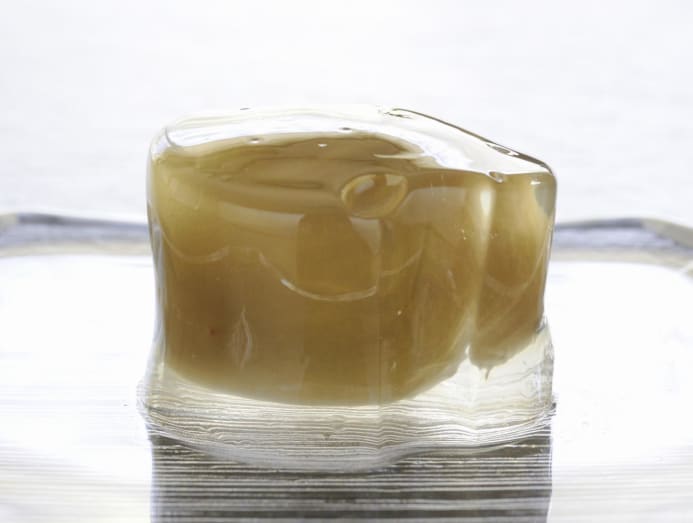
The chewy ingredient isn’t limited to savoury dishes either; it can be made into flavoured jellies or added to jelly drinks – and is even available as glucomannan supplements in tablet or capsule form to promote fullness and reduce food intake for weight management, said Seto.
Konjac is mostly tasteless and is a great canvas for soaking up the flavours of soups, sauces and gravies, said Reutens, although those made with seaweed powder may have a slight fishy taste. “The texture is chewy and has an al dente bite as compared to regular rice.”






